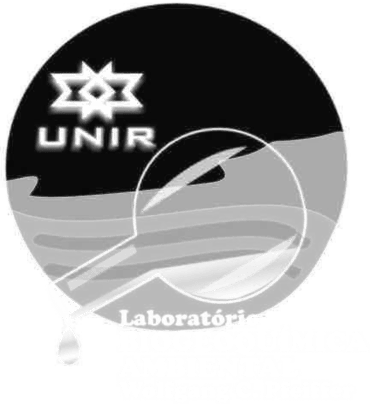Publicações 2016
Amazon, Chemodiversity, fruits from Amazonian, Heavy metals
ARTIGOS & PERIÓDICOS
Chemodiversity of dissolved organic matter in the Amazon Basin
Michael Gonsior, Juliana Valle, Philippe Schmitt-Kopplin, Norbert Hertkorn, David Bastviken5 , Jenna Luek, Mourad Harir, Wanderley Bastos, and Alex Enrich-Prast
Abstract: Regions in the Amazon Basin have been associated with specific biogeochemical processes, but a detailed chemical classification of the abundant and ubiquitous dissolved organic matter (DOM), beyond specific indicator compounds and bulk measurements, has not yet been established. We sampled water from different locations in the Negro, Madeira/Jamari and Tapajós River areas to characterize the molecular DOM composition and distribution. Ultrahigh-resolution Fourier transform ion cyclotron resonance mass spectrometry (FT-ICR-MS) combined with excitation emission matrix (EEM) fluorescence spectroscopy and parallel factor analysis (PARAFAC) revealed a large proportion of ubiquitous DOM but also unique area-specific molecular signatures. Unique to the DOM of the Rio Negro area was the large abundance of high molecular weight, diverse hydrogen-deficient and highly oxidized molecular ions deviating from known lignin or tannin compositions, indicating substantial oxidative processing of these ultimately plant-derived polyphenols indicative of these black waters. In contrast, unique signatures in the Madeira/Jamari area were defined by presumably labile sulfur- and nitrogen-containing molecules in this white water river system. Waters from the Tapajós main stem did not show any substantial unique molecular signatures relative to those present in the Rio Madeira and Rio Negro, which implied a lower organic molecular complexity in this clear water tributary, even after mixing with the main stem of the Amazon River. Beside ubiquitous DOM at average H ∕ C and O ∕ C elemental ratios, a distinct and significant unique DOM pool prevailed in the black, white and clear water areas that were also highly correlated with EEM-PARAFAC components and define the frameworks for primary production and other aspects of aquatic life.
Heavy Metals in Processed Products of Acai (Euterpe precatoria) and Cupuassu (Theobroma grandiflorum) in the Western Amazon Region of Brazil
Inez Helena Vieira da Silva Santos, Mariangela Soares de Azevedo, Wanderley Rodrigues Bastos, Dario Pires de Carvalho
Abstract: Acai and cupuassu are fruits from Amazonian trees which have important role in human nutrition in this environment. The contamination of food products by heavy metals must be inspected in order to avoid healthy problems to the consumers. During processing and preparation, foods stay for a significant period of time in contact with industrial containers and utensils. This contact can lead to changes in the nutrient composition or even change flavor and color of the products. These changes can be related to the migration of elements present in the composition of the equipment used in the production process. There are few studies that make an assessment of toxic elements in food products, particularly concerning native Amazonian fruits. Objective: The aim of this study was to evaluate the concentration of potentially toxic inorganic compounds in products of acai and cupuassu processed at the Joint Consortium for Economic Reforestation (RECA) in the state of Rondônia, in the Western Amazon region of Brazil. Results: It was observed in the analysis of the elements chromium, copper, manganese, nickel, lead and zinc that they were present in all the evaluated products – acai pulp, jam and jelly, and cupuassu pulp, jam, jelly without fruit pieces and jelly without fruit pieces. However, in comparison with the levels established by the Brazilian legislation, it was possible to observe that none of them exceeds the determined levels. Conclusion: Although present, the levels of the elements found in the evaluated products were considered low. The concentrations found imply no risk to the health of the population.





